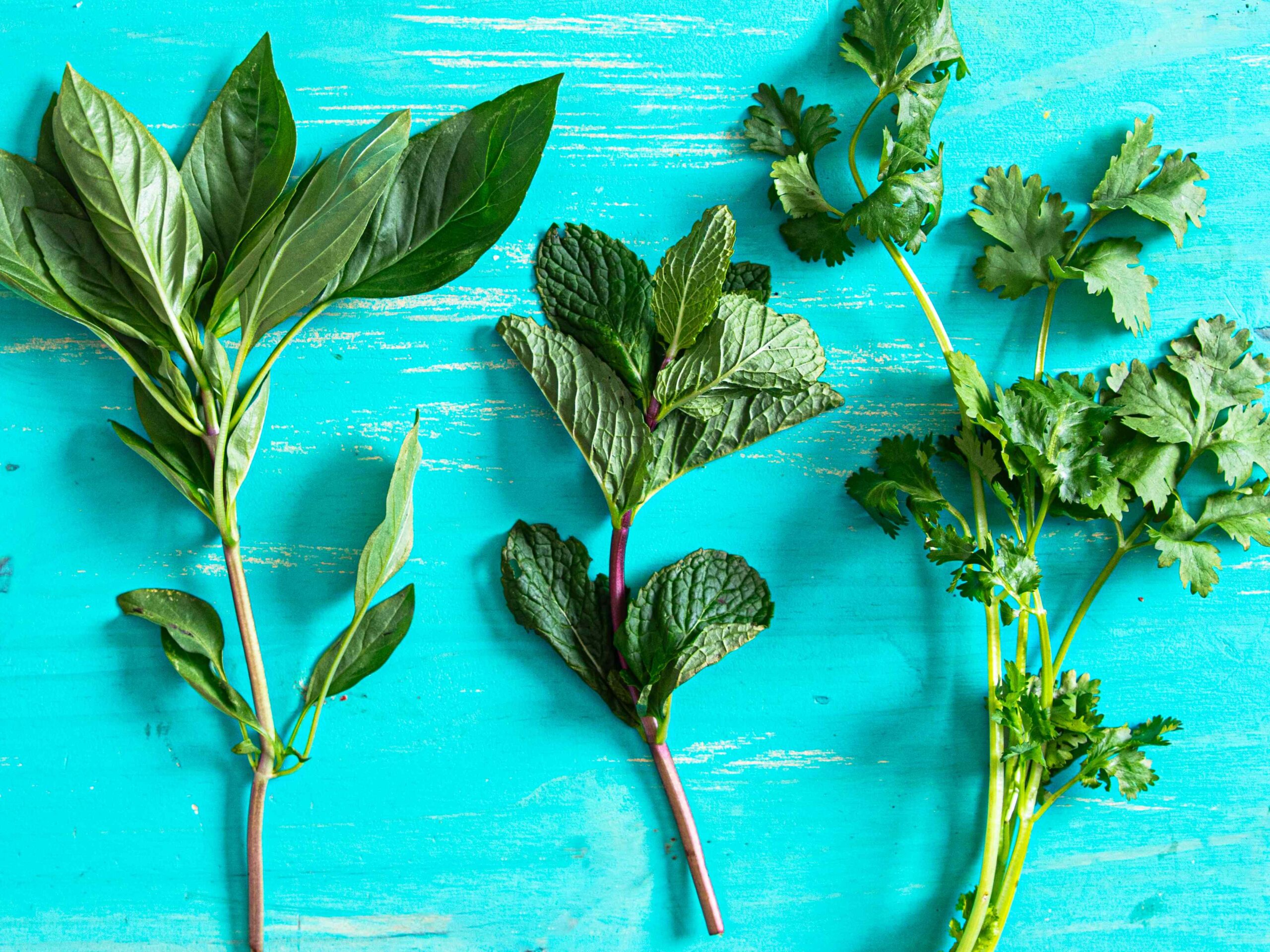:max_bytes(150000):strip_icc():format(jpeg)/20250806-WiltingHerbsTip-VickyWasik-b924edc6800245a4baa7c5e298a7548f.jpg)
For vibrant, long-lasting herb oil, blanch herbs briefly, shock them in ice water to lock in color, squeeze out excess moisture, and blend with oil until smooth.
We’ve all been there: A recipe calls for two tablespoons of chopped parsley or cilantro. You buy a whole bunch, use a handful, and the rest slumps in the fridge—even if you’ve stored it properly— getting browner every day.
It’s a shame, because fresh herbs bring so much to the plate. They add a grassy punch and verdant lift to any dish they’re added to, including salads, soups, pilafs, and even desserts. Some are assertive and lightly floral (think basil or tarragon), while others are cooling (like mint or lemon balm). But none of that matters when they end up completely browned, shriveled, and mushy at the bottom of the crisper drawer.
Luckily, if they’re not slimy, they’re not lost. There’s a simple, smart way to save all those leftover summer herbs: Turn them into herb oil. It’s the best way to give tired bunches a second life—vibrant, spoonable, and packed with flavor. The oil extends their color and freshness for weeks, transforming fresh greens into a silky, jade-green drizzle you’ll want to use on everything.
How to Make Herb Oil
Making herb oil is mostly hands-off and surprisingly forgiving. The key steps—blanching, chilling, blending, and straining—lock in color while drawing out deep, fresh flavor.
1. Gather your tools and prep an ice bath. To make herb oil you’ll need a bowl, pot or saucepan, fine-mesh strainer, and a blender. Fill a mixing bowl with ice water—you’ll need it to shock the herbs to halt the cooking process and preserve their color after briefly boiling.
2. Blanch the herbs. Drop your herbs into boiling water—salted or unsalted—and cook for about 20 seconds, just until they turn vivid green. The heat softens and partially collapses the plant’s cell structure, releasing trapped air and denaturing proteins that surround the chloroplasts, where chlorophyll is stored. This structural breakdown exposes the chlorophyll more directly, allowing its natural vivid-green color to appear brighter. The quick blanch also deactivates browning enzymes—especially one called polyphenol oxidase. Once those enzymes are out of commission, the herbs keep their bright color much longer. Salt can slightly aid in enzyme deactivation as well, but boiling water alone does a great job even without it. Immediately transfer the herbs to an ice bath to lock in that brightness.
3. Dry them thoroughly. Once chilled, remove the herbs from the ice bath, wrap them in paper towels or a clean kitchen towel, and squeeze out as much water as possible. Any leftover water will cloud the oil and mute its flavor, so be thorough here.
4. Blend with oil. Transfer the squeezed herbs to a blender. Add your oil of choice—I like extra-virgin olive oil for its assertive flavor, especially if I plan to use the final oil in Mediterranean-inspired dishes like, kebabs or whipped feta, but go with a more neutral option such as grapeseed or a lighter olive oil if you want something more subtle. Or you can use another flavorful oil that pairs well with the herb and the dish you plan to use it in—for example, sesame oil and shiso for an oil to drizzle over edamame. Blend on high for a couple of minutes until smooth. The friction of the spinning blades will warm the mixture and help release the herbs’ flavor even further.
5. Strain slowly. Set a fine-mesh strainer lined with cheesecloth over a bowl. Pour the oil through and let it drain naturally—pressing can push through fibrous solids that muddy the flavor and texture of the oil. This can take about 30 minutes, depending on the amount of herb oil you’re making, but the result is silky and flavorful, free of any grit.
6. Store and use. Transfer the strained oil to an airtight container and refrigerate. Since the oil seals out air and keeps the herbs from browning, it’ll stay green and usable for up to one week in the fridge.
How to Use Herb Oil
Once you have a prepared batch on hand, you’ll find endless uses. Think of it as a finishing oil, but with more flash.
- Drizzle it over a grilled vegetable and burrata platter, fried eggs, roasted fish, or a bowl of soup—herb oil adds instant flavor and a striking emerald swirl.
- Stir it into creamy dips. Mix it into yogurt or labneh for a cooling, celadon-green dip or side. It’s especially good paired with spicy or rich dishes.
- Drape it over grilled or seared meats as a simple, herbaceous sauce.
My favorite way to use herb oil—whether it’s basil, chive, parsley, or even thyme—is in a go-to dip I whip up when guests come over. I blanch a few scallions along with the herbs and blend them with a touch of honey. The result is gently sweet, with a mild allium bite I love. I stir the mixture into labneh, then finish it with crispy shallots, toasted pine nuts, and flaky sea salt. It’s vibrant, textured, and always a hit.
Trash Into Treasure
Never toss out a bunch of herbs again. Mix and match what you’ve got—parsley with mint, cilantro with chives—there are few bad pairings, just shifting shades of green. Herb oil gives herbs a second life, turning their fleeting freshness into something you can spoon, swirl, and savor. It’s one of the easiest ways to accentuate a dish by adding color and flavor—vibrant on the plate, bold on the palate, and always ready in the fridge.
